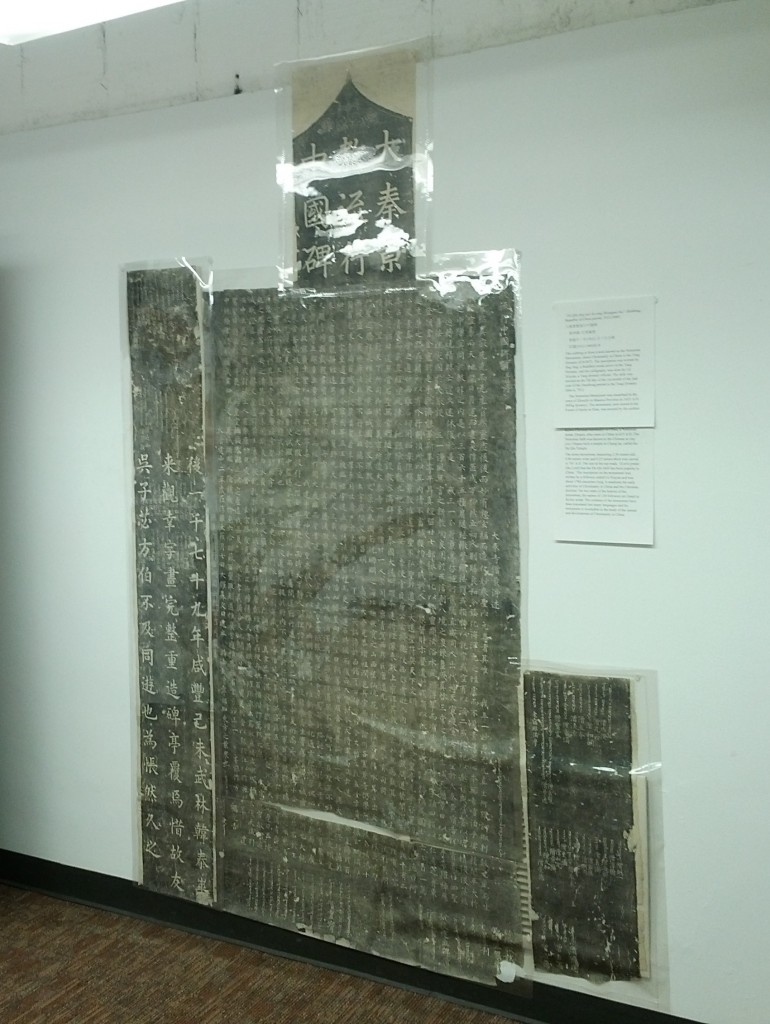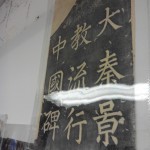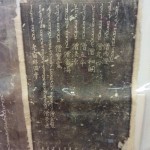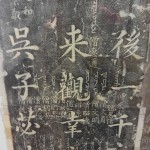大秦景教流行中國碑(民國拓片)
景凈撰 ; 呂秀巖書
唐建中二年[781]1月7日立碑
原碑現藏陝西西安碑林
“Nestorian Monument” (Rubbing, Republic of China period)
By Jing Jing ; Calligraphy by Lü Xiuyan
Stele erected in 781, now held in the Xi’an Forest of Steles
These rubbings are from a stele known as the Nestorian Monument, about Christianity in China in the Tang Dynasty (618-907). The inscription was written by Jing Jing, a Buddhist monk active in the Tang Dynasty, and the calligraphy was done by Lü Xiuyan, a Tang dynasty official. The stele was erected on the 7th day of the 1st month of the 2nd year of the Jianzhong period in the Tang Dynasty (that is, 781).
The Nestorian Monument was unearthed in the town of Zhouzhi in Shaanxi Province in 1623 A.D. (Ming dynasty). The monument, now stored in the Forest of Steles in Xian, was erected by the earliest known Christian missionary to China, a Nestorian monk, Olopen, who came to China in 635 A.D. The Nestorian faith was known to the Chinese as jing jiao. Olopen built a temple in Chang’an, called the Da Qin Temple.
The original stone monument, measuring 2.36 meters tall, 0.86 meters wide and 0.25 meters thick was carved in 781 A.D. The text at the top reads ‘(Let’s) praise (the Lord) that the Da Qin faith has been popular in China.’ The inscription on the monument was written by a follower called Lü Xiuyan and was about 1780 characters long. It mentions the early activities of Christianity in China and the Christian doctrine. On two sides of the bottom of the monument, the names of 128 followers are listed in Syriac script. The contents of the monument have been translated into many languages and the monument is invaluable to the study of the spread and development of Christianity in China.



